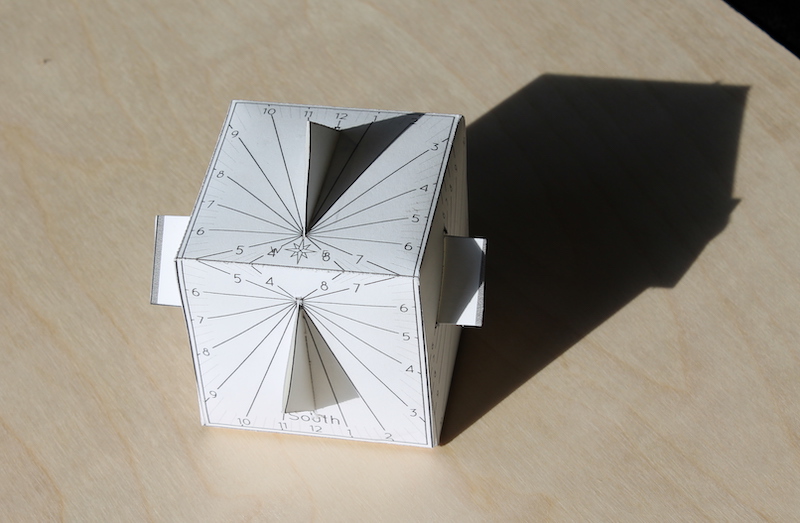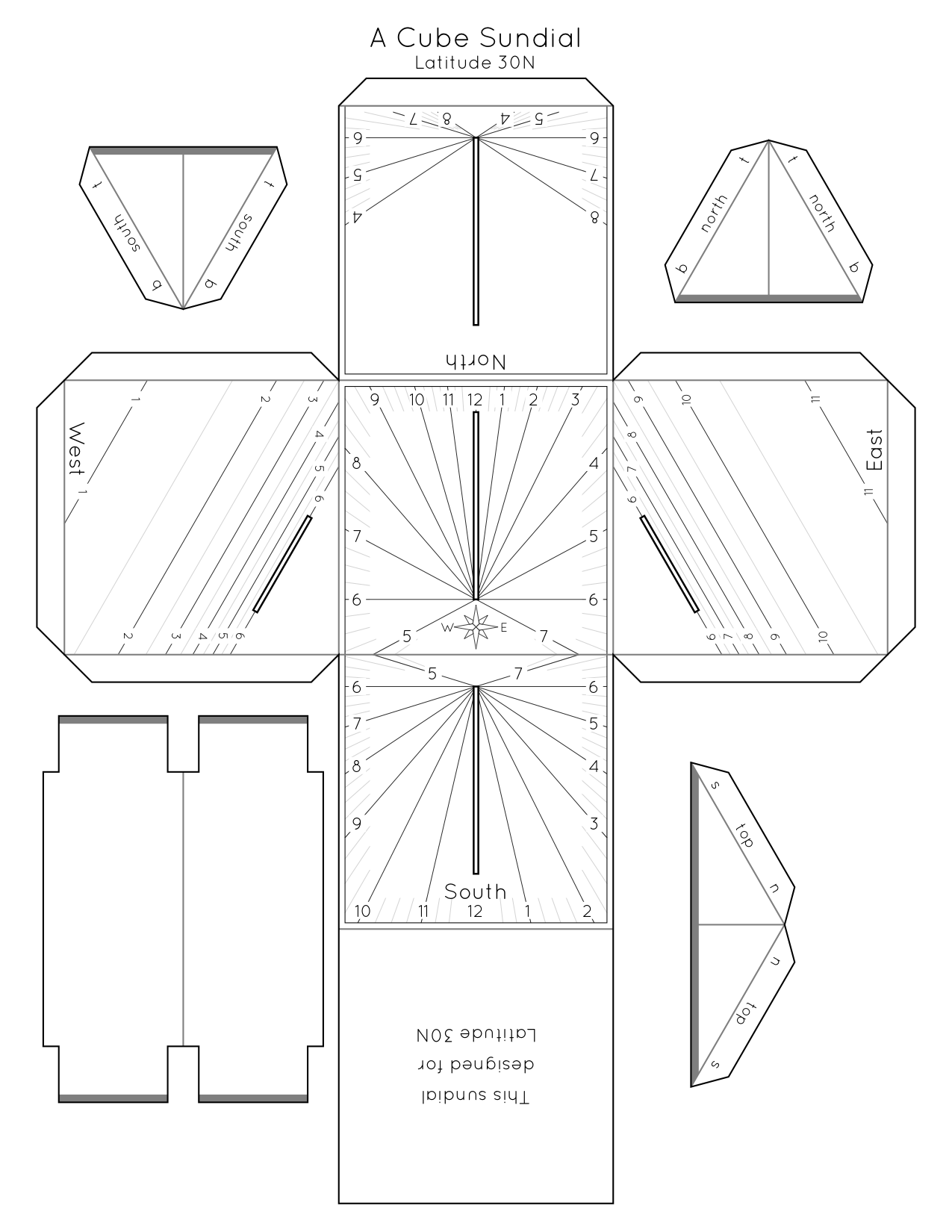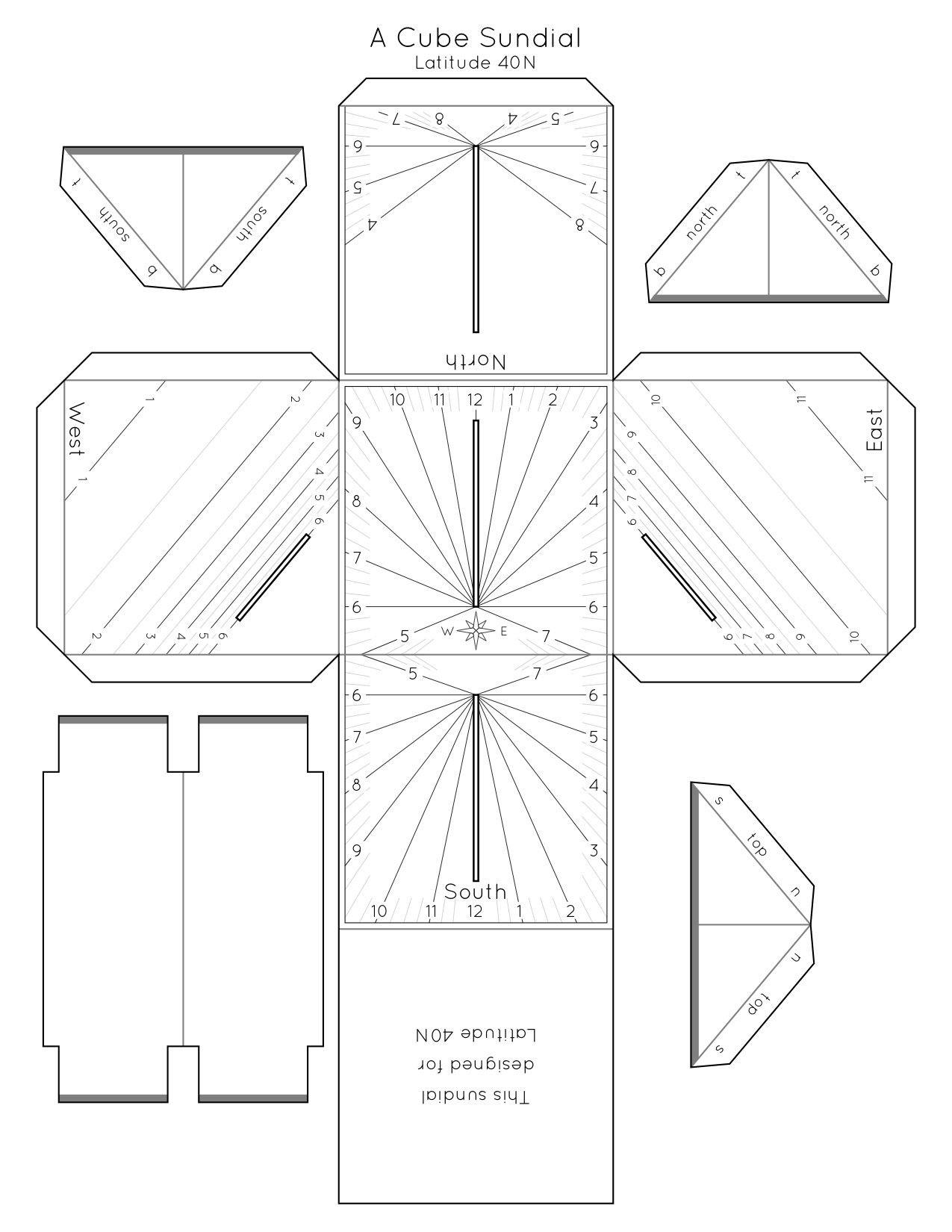Cube Sundials
A paper polyhedral sundial for kids to make. All five faces tell time whenever they are in sunshine.
I find that children in the, let’s say, 3rd-5th grade range can get especially excited about making sundials. If I show them several fancy paper designs, they want to make them all. There are a few sources out there for paper sundial designs, such as Rob Ives’ Equatorial Sundial, the book Sundials and Timedials, and Sunny Day U, but I wanted at least one fancy sundial of my own, so I designed this cube version.
Unfortunately, a cube is not as easy to adapt to different latitudes as other types of sundials. An easy way to do it would be to design one sundial for 45° Latitude, and then make an adjustable base that will tilt the cube to whatever angle you need so that the gnomons line up with the celestial axis. But if you want the cube to rest flat, and adjust all the gnomons for every different latitude, you have to account for sizes and spacings of markings and decorations on the faces, as well sizes and positions of the slots for the gnomons. Also, for latitudes near the poles, the gnomons would all have to stand up straight, and for latitudes near the equator, they would all have to rest horizontally, and that would require fundamental changes to the design. So for now, I have only two printouts available, one for 40°N Latitude, and one for 30°N Latitude, and you can download those by clicking on the links below.
Incidentally, it is possible to make sundials in much more complicated shapes than cubes. The Ancient Greeks made sundials in the shape of hemispheres, cylinders, and cones, as well as horizontal surfaces. In the “Golden Age of Sundials,” “polyhedral dials” were quite popular. If you really want to be impressed with the beauty of sundials, try performing an internet search for polyhedral sundials.
Making the Sundial
Cut Out the Parts
After printing the sundial onto a sheet of card stock, cut out all pieces along their outlines, and cut the slit in each of the five upper faces to accommodate the gnomons. For the east-west gnomon (the sorta-rectangular piece), you may find that you get neater results if you rough-cut it first, then fold it in half along the centerline, and then trim the corners after it’s folded. The corners will be neater that way. For the slots, you will want to use a utility knife or hobby knife of some kind. (I have dissection supplies lying around, so I used a scalpel.) You will also probably want to run your blade carefully along a ruler or other straightedge to keep your cut lines neat and straight.
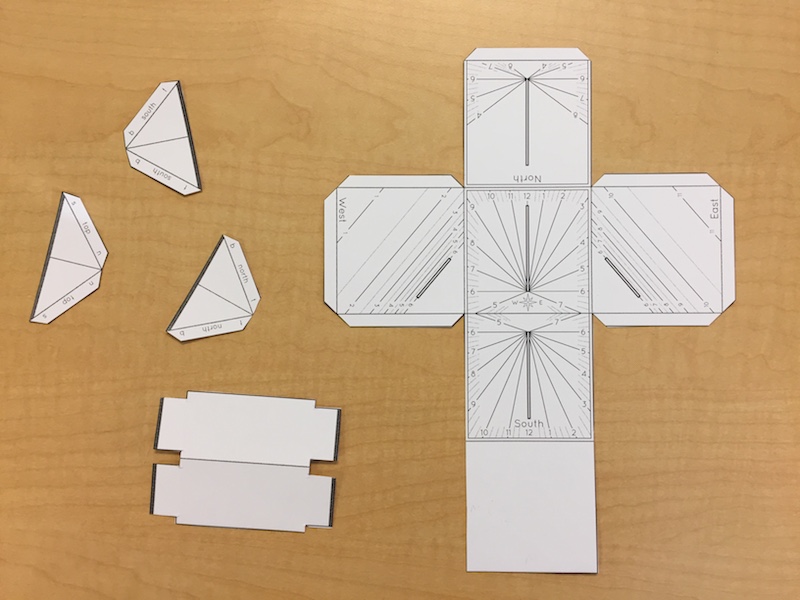
Fold The Parts
All pieces are to be folded along the fold lines (thin gray lines). It really helps to make crisp straight folds if you score the lines first — hold a ruler along the line as a guide, and run a dull pin or edge of some kind along the fold line.
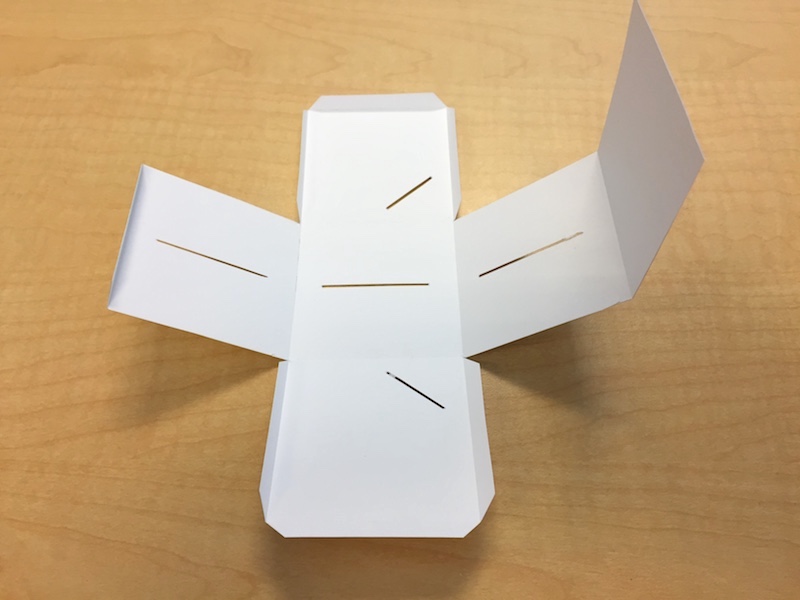

Assemble the Parts
Start by taping or gluing the meridian gnomons (the triangular ones) in place in their respective slots, being careful to orient them the correct way. The word in the center of each gnomon tells which face it belongs to, and the letters on the ends tell which end is which. (The letters “t” and “b” represent top and bottom ends, while “n” and “s” stand for for north and south ends.)
After the meridian gnomons are in place, fold the east and west sides together, while positioning the east-west gnomon between them, and finish by taping or gluing all of the edges together.

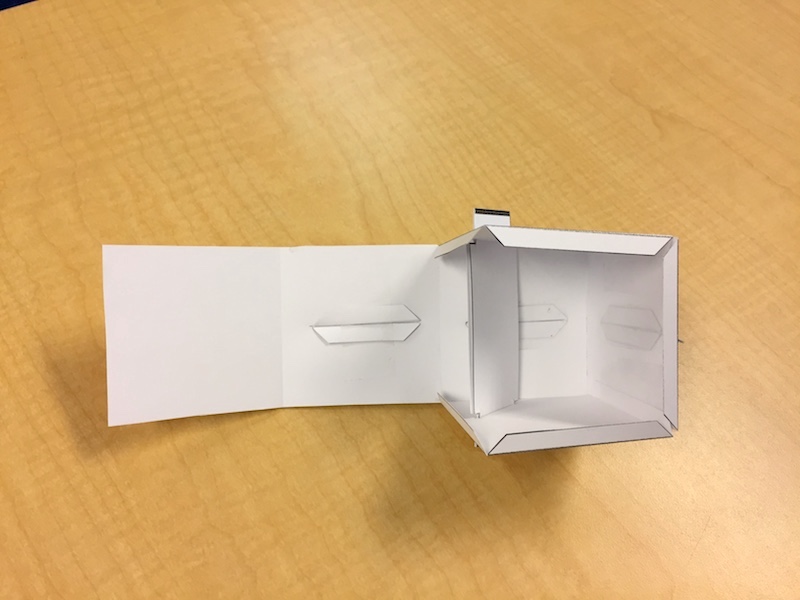
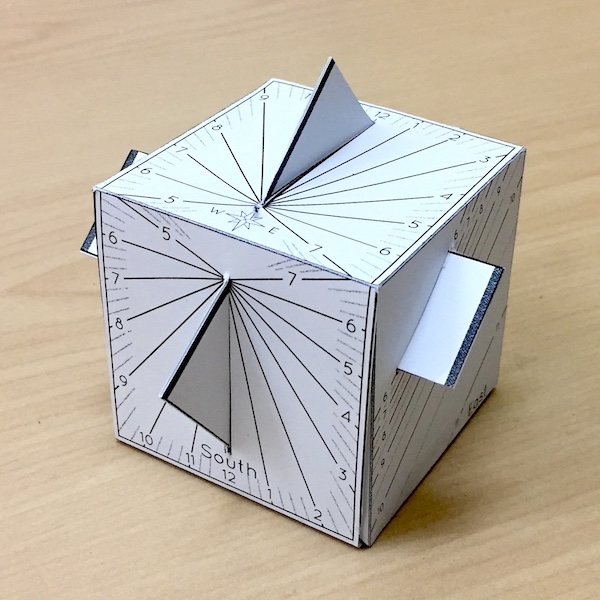
Using the Sundial
As with any sundial, this cube must be positioned the right way to tell proper time. Each side must face the proper cardinal direction. All gnomons should be parallel to each other, and when the cube is facing the correct way, then all of the gnomons will be lined up with the celestial axis (or the axis of the Earth, depending on how you look at it). Once positioned properly, all five faces should give reasonably accurate solar time whenever they are in the sunshine. The top and south faces should tell time for most of the day. The east and west faces will tell time during the morning and the afternoon, respectively. The north face will only receive sunshine in the early morning or late evening hours in the middle of summer.
In the picture below, the top and south faces both show 2 P.M. (The western face does as well, but I wasn't able to include that in the photograph in such a way that you could still read the top and south faces.)
